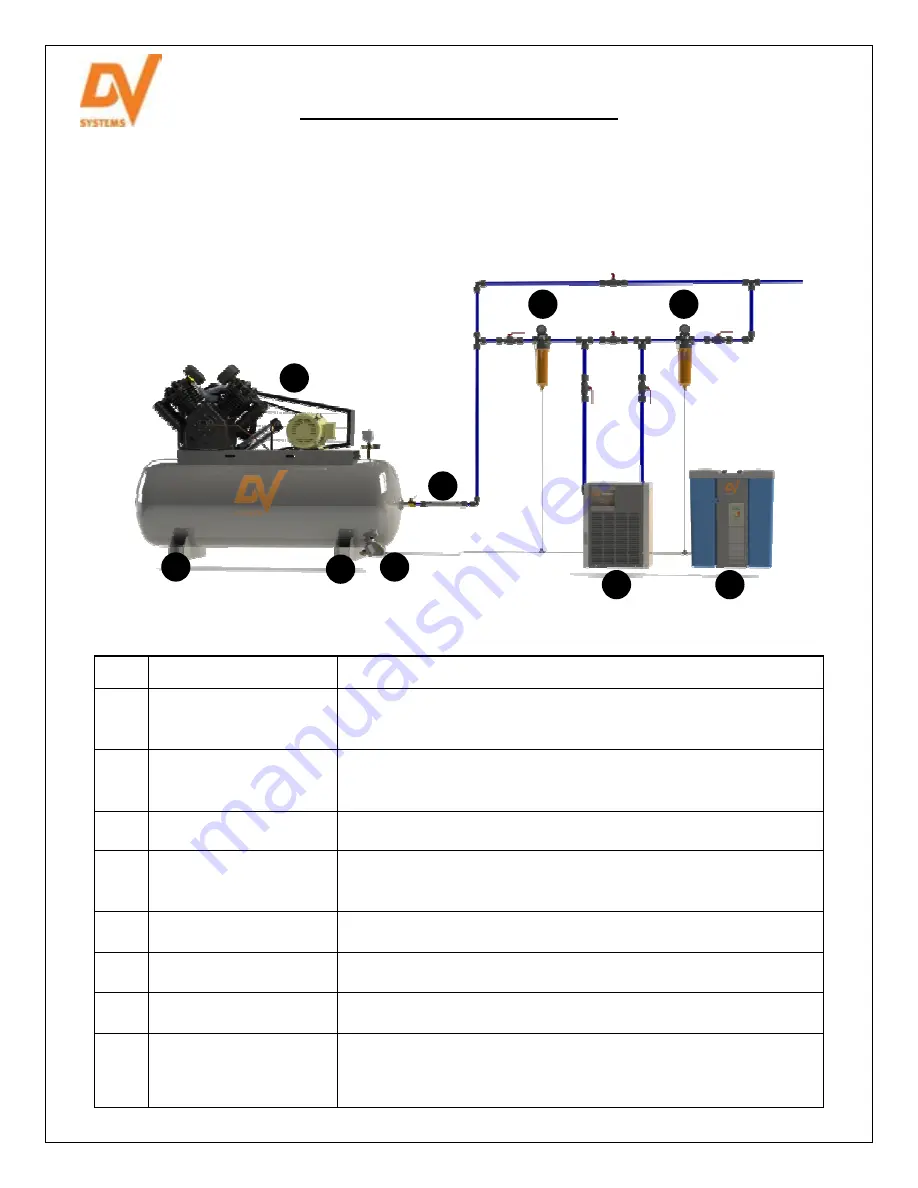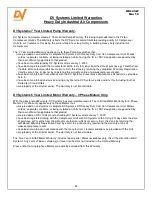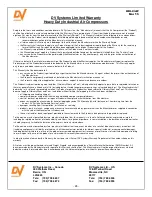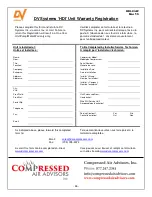
HDI-03-W
Mar ‘15
- 15 -
Compressed Air System Design
In designing a compressed air system, there are several factors that must be considered. Though cost may be a
factor in most designs, it cannot be the final determining factor, especially where air quality, air volume, and air
pressure are critical.
Shown below is a typical layout of a compressed air system.
Item: Component:
Description:
A
Air Compressor
Is the heart of the compressed air system. Ensure it is sized properly
for the application, installed in a correct and safe manner, and in
maintained according to the maintenance guidelines.
B
Vibration Isolators
Absorb any vibration caused by the normal operation of the Unit, allow
for any irregularities in the floor, and help to make the Unit marginally
quieter.
C
Automatic Drain
Drains the Compressor Tank on a regular basis. Available as either
pneumatic or electronic operated.
D
Flex Hose
Protects the building air lines from vibration caused by the
Compressor, and allows for any misalignment between the
Compressor outlet and building piping.
E
Separator Filter
Acts as a pre-filter to the Refrigerated Air Dryer. Generally a ‘Cyclone’
or 10 micron Filter.
F
Refrigerated Air Dryer
Removes the moisture from the compressed air by lowering the
temperature of the air to a few degrees above freezing.
G
Coalescing Filter
Removes oil from the compressed air. Available in 1.0 micron and
0.01 micron.
H
Oil Water Separator
Separates the oil from the moisture drained by the Compressor Tank,
Refrigerated Air Dryer, and Filters. Oil is trapped by internal Filters,
while the separated water is allowed to be dispensed to the building
drain.
G
E
F
A
B
C
D
H
B












































